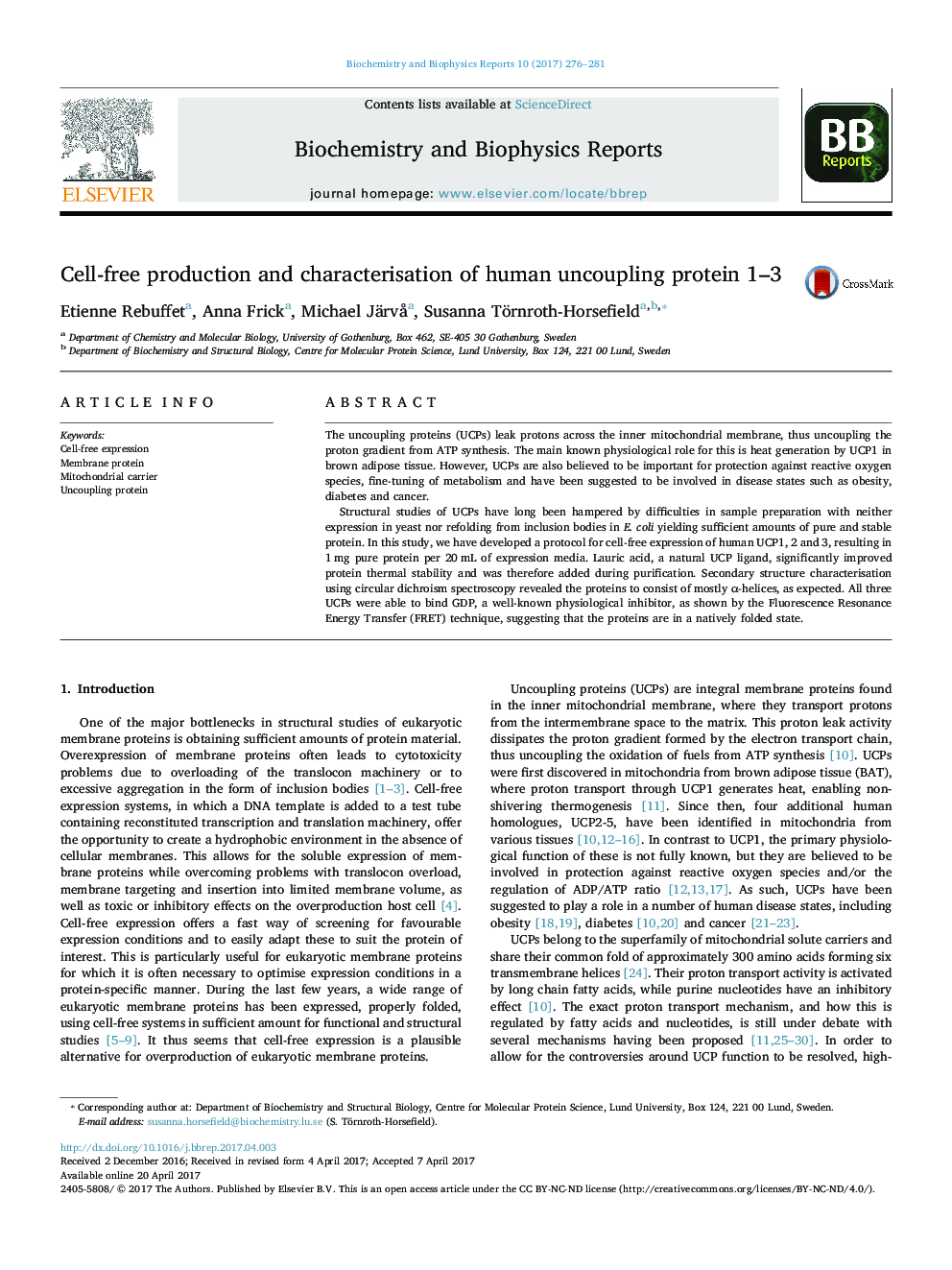| کد مقاله | کد نشریه | سال انتشار | مقاله انگلیسی | نسخه تمام متن |
|---|---|---|---|---|
| 5507021 | 1536898 | 2017 | 6 صفحه PDF | دانلود رایگان |
- A protocol for cell-free expression of human uncoupling protein 1-3 is described.
- Addition of native membrane components increased expression levels.
- Addition of lauric acid increased protein stability in solution.
- CD spectroscopy confirms alpha-helical secondary structure as expected.
- All proteins binds GDP as demonstrated by Fluorescence Resonance Energy Transfer.
The uncoupling proteins (UCPs) leak protons across the inner mitochondrial membrane, thus uncoupling the proton gradient from ATP synthesis. The main known physiological role for this is heat generation by UCP1 in brown adipose tissue. However, UCPs are also believed to be important for protection against reactive oxygen species, fine-tuning of metabolism and have been suggested to be involved in disease states such as obesity, diabetes and cancer.Structural studies of UCPs have long been hampered by difficulties in sample preparation with neither expression in yeast nor refolding from inclusion bodies in E. coli yielding sufficient amounts of pure and stable protein. In this study, we have developed a protocol for cell-free expression of human UCP1, 2 and 3, resulting in 1 mg pure protein per 20 mL of expression media. Lauric acid, a natural UCP ligand, significantly improved protein thermal stability and was therefore added during purification. Secondary structure characterisation using circular dichroism spectroscopy revealed the proteins to consist of mostly α-helices, as expected. All three UCPs were able to bind GDP, a well-known physiological inhibitor, as shown by the Fluorescence Resonance Energy Transfer (FRET) technique, suggesting that the proteins are in a natively folded state.
Journal: Biochemistry and Biophysics Reports - Volume 10, July 2017, Pages 276-281
